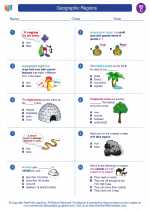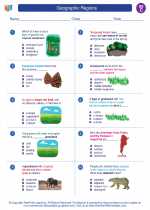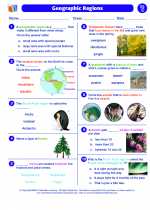Geographic Regions -> temperate climate zone
Temperate Climate Zone
The temperate climate zone is characterized by moderate temperatures and distinct seasons. This climate zone is located between the polar and tropical zones, typically between 30 and 60 degrees latitude in both the northern and southern hemispheres. The temperate zone experiences four distinct seasons: winter, spring, summer, and fall. It is known for its moderate rainfall and fertile soil, making it suitable for a variety of agricultural activities.
Key Characteristics of the Temperate Climate Zone
- Moderate temperatures
- Four distinct seasons
- Moderate rainfall
- Fertile soil
Climate Subtypes
Within the temperate climate zone, there are two main subtypes: the Mediterranean climate and the humid subtropical climate.
Mediterranean Climate
- Characterized by hot, dry summers and mild, wet winters
- Found in regions bordering the Mediterranean Sea, parts of California, Chile, and South Africa
Humid Subtropical Climate
- Characterized by hot, humid summers and mild winters with ample rainfall throughout the year
- Found in the southeastern United States, eastern Asia, and parts of South America
Vegetation and Agriculture
The temperate climate zone supports a diverse range of vegetation, including deciduous and coniferous forests, grasslands, and agricultural crops such as wheat, corn, and fruits. The moderate climate and fertile soil make it suitable for a variety of agricultural activities, contributing to the region's food production and economic development.
Impact on Human Settlement
The temperate climate zone has historically been favorable for human settlement and development due to its moderate climate, fertile land, and suitability for agriculture. Many major cities and population centers are located within this climate zone, contributing to its cultural and economic significance.
Study Guide Questions
- What are the key characteristics of the temperate climate zone?
- Identify two subtypes of the temperate climate zone and their respective characteristics.
- How does the temperate climate zone support vegetation and agriculture?
- Explain the historical impact of the temperate climate zone on human settlement and development.
[Temperate Climate Zone] Related Worksheets and Study Guides:
.◂Social Studies Worksheets and Study Guides Third Grade. Geographic Regions

 Worksheet/Answer key
Worksheet/Answer key
 Worksheet/Answer key
Worksheet/Answer key
 Worksheet/Answer key
Worksheet/Answer key
 Worksheet/Answer key
Worksheet/Answer key
